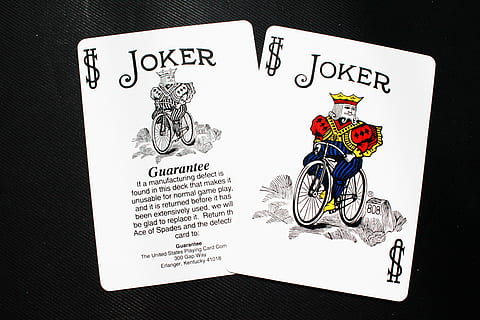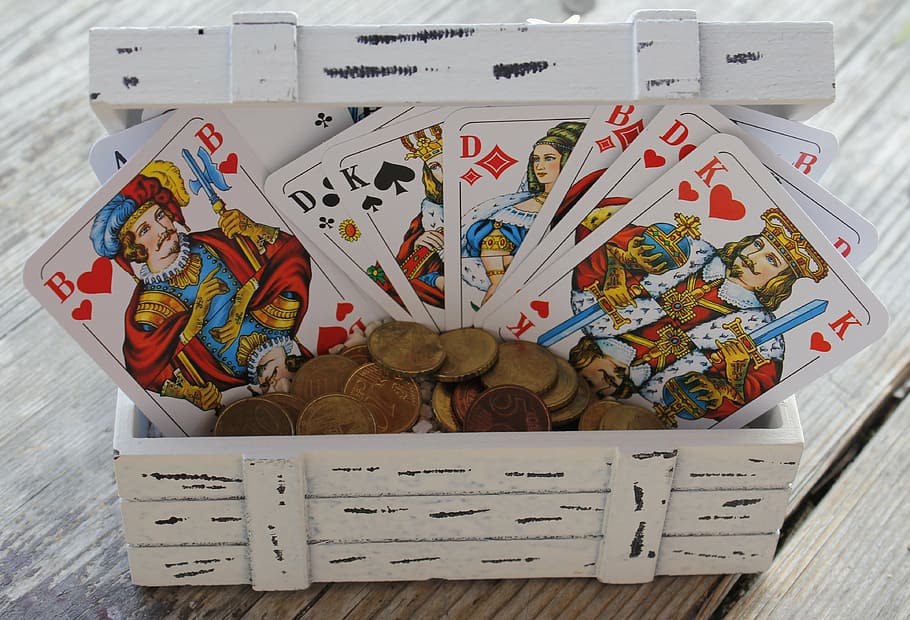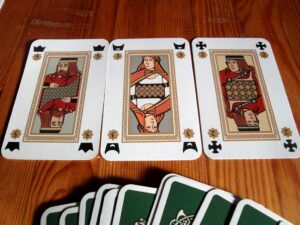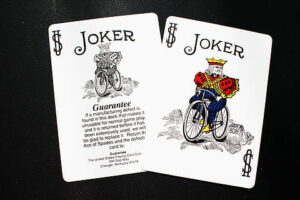How To Play Screw Your Neighbor Card Game ?

How To Play Screw Your Neighbor Card Game :- Screw Your Neighbor,” also known by various aliases such as “Ranter-Go-Round,” “Moogle,” “Chase the Ace,” “Cuckoo,” and “Trade Game,” offers a captivating blend of luck, logic, and chance, elevating the excitement and enjoyment of gameplay. The primary aim of this engaging card game is to avoid being saddled with the lowest card at the culmination of each round, adding a layer of strategic depth to the experience.
Gathering with family and friends for a day of leisurely gaming presents an ideal opportunity for bonding and shared enjoyment. Card games, in particular, serve as a convenient avenue for fostering camaraderie while stimulating thought-provoking discussions amidst strategic gameplay. “Screw Your Neighbor” epitomizes this dynamic, offering a versatile and accessible gaming experience suitable for players of all ages.
This versatile game requires nothing more than one or two decks of standard playing cards and a minimum of three participants, making it an accessible choice for impromptu gatherings or leisurely evenings. Its straightforward rules and intuitive mechanics ensure that players can quickly grasp the fundamentals, facilitating seamless enjoyment for all involved. At its core, “Screw Your Neighbor” challenges players to navigate the twists and turns of luck and strategy, striving to evade the undesirable fate of holding the lowest card as each round draws to a close.

What is Screw Your Neighbor?
Screw Your Neighbor, known by various monikers including the more colorful version mentioned above, as well as aliases like Cuckoo, Trade Game, and Ranter-Go-Round, boasts a rich history dating back to the 1800s, with some reports tracing its origins even further back to the 17th century in Europe.
Regardless of the name it goes by, players familiar with this card game understand its unique blend of logic, luck, and chance, which adds an element of unpredictability to each round.
With its accessibility and simple rules, Screw Your Neighbor serves as an ideal family-friendly game suitable for children aged six and up, provided the rules are kept light and straightforward.
One of the game’s standout features is its versatility, as it can be enjoyed virtually anywhere and anytime with nothing more than a deck or two of cards and a few willing participants.
The game’s objective, while straightforward, sets the stage for an engaging experience filled with twists and turns that keep players on their toes. With these elements in mind, let’s delve into the intricacies of playing Screw Your Neighbor.

MASTERING SCREW YOUR NEIGHBOR: In Screw Your Neighbor, the primary goal is to avoid holding the lowest-ranking card by the conclusion of each round, showcasing strategic acumen and cunning gameplay.
PARTICIPANTS: Suitable for groups of 3 or more players, fostering a dynamic and competitive gaming atmosphere.
REQUIRED EQUIPMENT: A standard deck of cards (or multiple decks for larger groups), a stable playing surface, and the convenience of pen and paper for scorekeeping purposes.
GENRE: Positioned within the realm of strategy card games, Screw Your Neighbor challenges players to navigate a delicate balance of risk and reward.
AUDIENCE APPEAL: Designed to captivate players of all ages, Screw Your Neighbor offers an accessible yet engaging gaming experience, fostering spirited competition and strategic thinking among participants.
How To Play Screw Your Neighbor Card Game Set Up
In preparation for a lively round of Screw Your Neighbor, players convene in a circular formation around a central playing space. Each participant is initially endowed with three lives, setting the stage for an exhilarating gameplay experience. To kickstart the action, players are tasked with drawing a card from a thoroughly shuffled deck. The individual wielding the highest card earns the esteemed role of the first dealer, with any ties swiftly resolved through a redraw.
Assuming the mantle of dealer, the chosen player proceeds to meticulously shuffle the deck before distributing a single card, face down, to every participant. This pivotal moment marks the commencement of gameplay, as players eagerly await the unfolding of strategic maneuvers and unforeseen twists in their quest for dominance.

How To Play Screw Your Neighbor Card Game How To Play The Game ?
The game of Screw Your Neighbor unfolds with the dealer distributing one card face down to each player. Upon examining their respective cards, players face a pivotal decision: to retain their current card or engage in a potentially advantageous trade. Beginning with the player to the left of the dealer, participants take turns either keeping their card or exchanging it with the player adjacent to them, hoping to secure a higher-ranking card.
However, a strategic twist arises when a player holds a king, granting them the ability to reveal it and thwart any attempted trade, forcing the initiator to retain their card. This dynamic introduces an element of risk assessment and bluffing into the gameplay.
As the dealer, whose turn arrives last, there’s an additional option to exchange their card with one cut from the undealt stock. However, caution is warranted, as acquiring a king obliges the dealer to retain their original card.
Once all trades are finalized, participants reveal their cards, with aces consistently deemed the lowest ranking. Players holding the lowest cards, as determined by their face value, are required to contribute a chip to the pot. In the event of a player lacking chips, they face elimination from the game.
In cases where multiple players tie for the lowest card, each participant shares the consequences, collectively losing a life. The subsequent round commences with the next player to the left dealing cards as before, prolonging the strategic tension and excitement.
Throughout gameplay, the hierarchy of cards follows K (high), Q, J, 10, 9, 8, 7, 6, 5, 4, 3, 2, with Aces occupying the lowest rank. Suit distinctions are inconsequential, streamlining the gameplay and emphasizing the strategic interplay of card values and player decisions.

Rules
The Stewart N. Ethier rules, as elucidated in his book “The Doctrine of Chances: Probabilistic Aspects of Gambling,” offer a structured framework for playing what he terms as Le Her, a variant of Screw Your Neighbor.
Here’s a breakdown of the rules:
- Deck and Card Rankings: The game employs a standard 52-card deck, with Kings regarded as high and Aces as low.
- Initial Wager: Each player antes up a predetermined amount, typically three units of a specified currency, such as $1, resulting in a total pot of $3 at stake.
- Determining the Dealer: The deck is cut to ascertain the initial dealer for the round.
- Card Distribution: The dealer deals one card face down to each player, including themselves.
- Initial Assessment: Players examine their respective cards, promptly revealing any Kings they receive.
- Trading Phase: Commencing from the dealer’s left, players decide whether to retain their card or exchange it with the player to their left. However, Kings serve as blockers and cannot be swapped. If the neighboring player’s card is a King, the opportunity to exchange is forfeited.
- Dealer’s Turn: As the last to act, the dealer may choose to swap their card with the top card of the deck, known as the “dummy.” However, if the dummy card is a King, it acts as a blocker, preventing the dealer from making the exchange.
- Determining the Loser: The player holding the lowest card incurs a penalty, contributing one unit to the pot. In case of a tie, the player closest to the dealer’s left is deemed the loser.
- Player Elimination:A player is eliminated from the game upon depleting their units to contribute to the pot.
- Repeating Rounds: The game proceeds with subsequent rounds, adhering to rules 1 through 9 until only one player remains. The last surviving player, with any remaining units, claims the entire pot as the victor.
These rules provide a structured framework for navigating the strategic nuances of Le Her, emphasizing player decisions and probability considerations within the context of Screw Your Neighbor gameplay.




